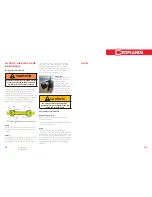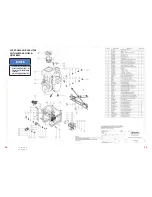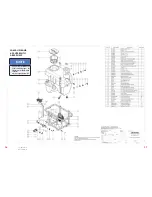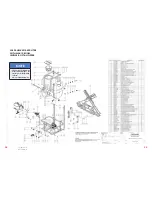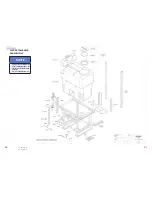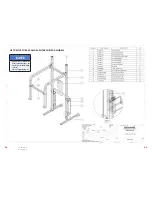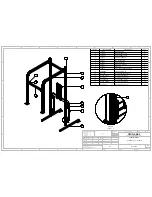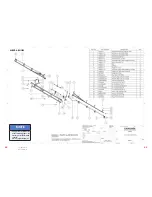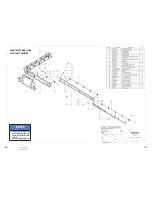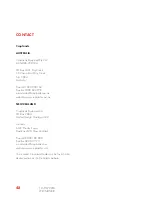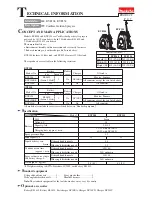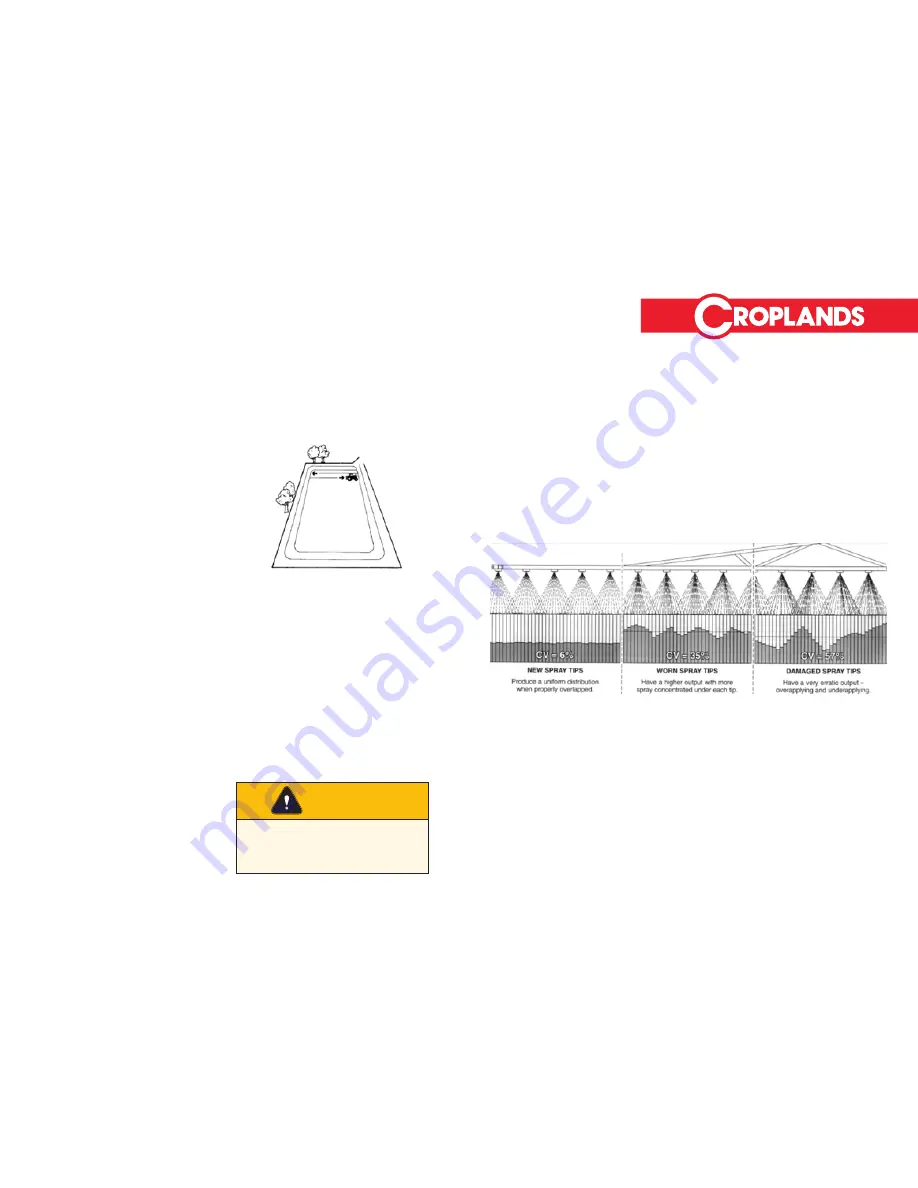
24
25
18/09/2016
LP-OMLINK-B
SECTION 6: SPRAYING
INFORMATION
This section also provides information
relevant to Calibrations in section 7
When to spray
Spraying results are best when the wind speed and
the temperature are low but the relative humidity
is reasonably high. An ideal time is at sun up or
nearing the end of the day when these conditions
are more likely to occur.
For more information, contact Croplands about our
SprayWise® program, or purchase a copy of the
SprayWise Application Guide from Croplands.
Also, the use of the WINDMATE™ Wind meter
would be of excellent value to anyone doing
regular spraying.
Field patterns
For the best coverage, spray two swath widths
around the outer perimeter of the field as shown
in the diagram. This establishes a good headland
and will give you adequate room to turn around.
Turn the booms off when you come back on to the
headland to prevent over spraying and wastage.
Using a guidance system such as GPS or foam
markers can prevent overlaps and ensure you get
better coverage.
Ground Speed
Modern tractors should have sufficient speed
accuracy for sprayers of this size. To check the
speed, fill the tank and open the boom to simulate
usual spraying conditions. See section 7 to learn
how calculate ground speed if your tractor does not
have a reliable speedometer.
For spraying with an AgriPak linkage sprayer, the
speed will you can safely & accurately spray at
will depend on the conditions, terrain, and product
being applied. In general, speeds of 5 to 15 km/hr
are most often within the range for linkage spraying.
Spray Quality
Spray quality is becoming extremely important for
the correct application of chemicals. Refer to your
advisor, local DPI or check the Croplands Buyers
Guide for more information. Many chemical labels
now specify the spray quality required for the
product being used. Loosely, spray quality falls into
a droplet range of:
»
Ultra Coarse
»
Extremely Coarse
»
Very Coarse
»
Coarse
»
Medium
»
Fine
»
Very fine
Field patterns
CAUTION
Most spray applications will fall into the
Medium to Very Coarse range, depending
on the application. Talk to a qualified
Agronomist or Advisor if uncertain.
Nozzle spacing and height
Nozzles overlap should be 50% at the point of
contact with the spraying surface. Croplands booms
operate with a nozzle spacing of 500mm (50cm)
with nozzles slightly offset to avoid interference.
Nozzles are supplied with 110° angled patterns.
The recognized height to achieve the required
50% overlap is 400mm-500mm for 110° nozzles
(measured from the target to be sprayed).
Spray pattern and uniformity
Your nozzle spray pattern, overlap and uniformity
need to be monitored and can be tested in the
following manner. Keep a spare new nozzle to with
which you can compare the other nozzles on your
unit. Place the new nozzle at a central point on the
boom and fill the tank with fresh, clean water and
switch the boom on. Examine the spray patterns
against a dark background and replace any that
show signs of damage or sufficient wear as shown
below.

















